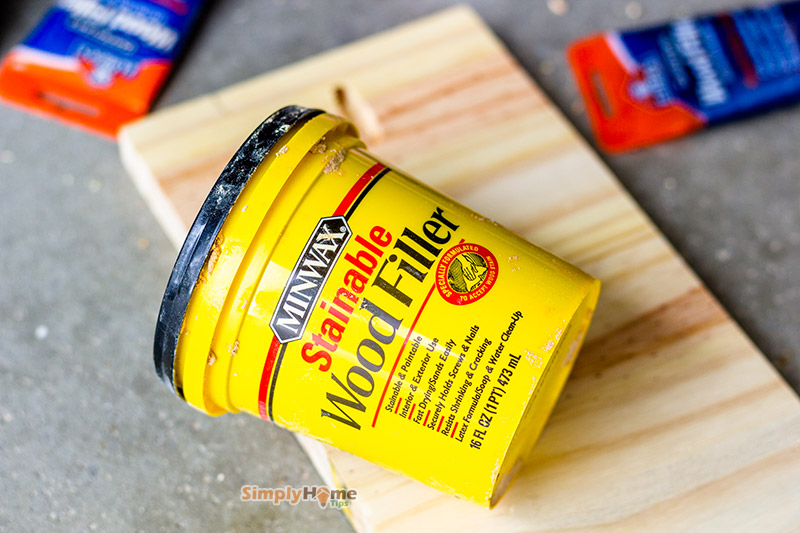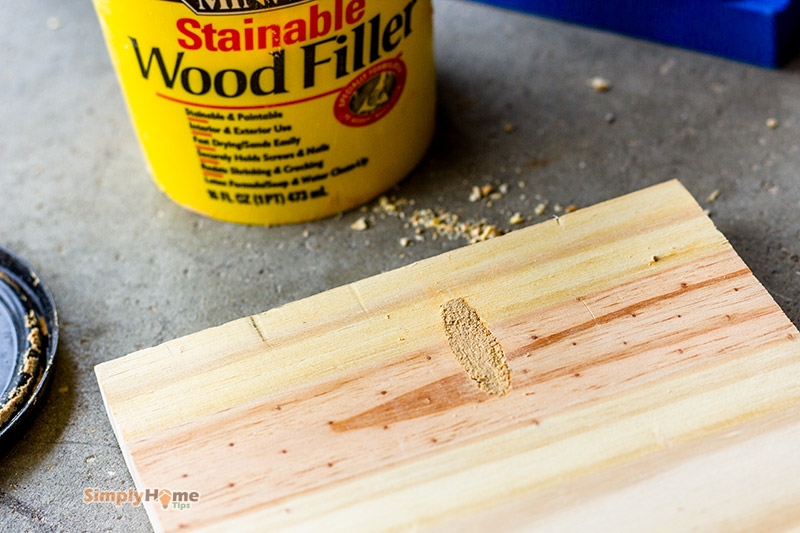Store-bought pocket hole plugs are difficult to insert securely and usually require additional filling with wood filler. Pocket hole plugs can be cut from a piece of wood using a pocket hole plug cutter, but unless you’re going to need to make pocket hole plugs regularly, you probably won’t want to invest in a plug cutter. Try using one of these three very easy, inexpensive ways to fill pocket holes when you only have a few pocket holes to fill.
1. Fill Pocket Holes with Dowel Rod Sections
Use small sections of dowel rod to fill pocket holes.
Things you will need:
- Wooden dowel rod the same diameter as the pocket holes and 1 inch longer than their depth.
- Hammer
- Flush trim saw
- 150-grit sandpaper
How to fill pocket holes with dowel rod sections:
- Insert the section of dowel rod into the pocket hole. Use flush-cut dowel rod sections. Don’t try to cut it at an angle.
- Tap the dowel rod into the pocket hole with a hammer.
- Saw the protruding part of the dowel rod off with the trim saw. Begin sawing from behind the dowel rod. Lay the saw flat on the wood and saw the dowel rod off.
- Sand the pocket hole dowel rod plug smooth with 150-grit sandpaper.
2. Fill Pocket Holes with Wood Filler
 Use plain old wood filler to fill pocket holes for woodworking. This is the easiest way to fill them. Water-based wood filler is easy to use, doesn’t require any messy mixing or solvents, is easy to sand smooth after it dries and can be stained or painted with either oil-base or latex stains and paints.
Use plain old wood filler to fill pocket holes for woodworking. This is the easiest way to fill them. Water-based wood filler is easy to use, doesn’t require any messy mixing or solvents, is easy to sand smooth after it dries and can be stained or painted with either oil-base or latex stains and paints.
Things you will need:
- 150-grit sandpaper
- Wood filler
- Putty knife (metal, plastic or rubber)
How to fill pocket holes with wood filler:
- Sand the edges of the pocket holes smooth with 150-grit sandpaper.
- Remove any wood shavings or dust from the pocket holes.
- Use a putty knife to fill the holes with wood filler. Press the filler into the hole to eliminate air bubbles. Fill the holes just slightly over full.
- Leave the wood filler to cure. This will take anywhere from 15 minutes to several hours, depending on the depth of the pocket hole.
- Sand the dried wood filler smooth.

3. Fill Pocket Holes with Bondo
Use Bondo to fill the pocket holes. Most types of Bondo won’t take stain. They can only be painted. 3M makes a Bondo wood filler that you can stain, though. Be sure to use Bondo in a well-ventilated area.
Things you will need:
- 150-grit sandpaper
- All-purpose Bondo
- Glass or plastic container
- Putty knife (metal)
How to fill pocket holes with Bondo:
- Sand the pocket hole edges with 150-grit sandpaper.
- Clear wood shavings and dust from the pocket hole.
- Mix the hardener into the Bondo according to the manufacturer’s instructions. Use a shallow or flat glass or plastic container. The hardener comes with the Bondo.
- Use a putty knife to fill the holes with Bondo. Press it into eachpocket hole to eliminate air bubbles. Overfill the holes.
- Remove the excess Bondo after it has cured for 10 minutes. Position the metal putty knife flat on the wood at one edge of the Bondo and push the knife forward to slice off the excess. The remaining Bondo should be only just slightly higher than the surrounding wood after you scrape off the excess.
- Sand the Bondo smooth after 30 minutes.
A Japanese pull saw works well for cutting plugs.